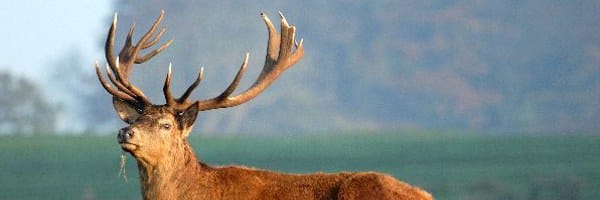Skip to contentTop Facts about Deer
- How much do you know about deer? If the answer is not very much then don’t worry. As you explore these fun and informative deer facts you will soon have plenty of information about them.
- Deer are ruminant mammals belonging to the family Cervidae.
- All male deer have antlers, with the exception of the Chinese Water Deer, which have tusks.
- This family classification include well known animal like the Moose, Red Deer, Reindeer, Roe and Chital among others.
- Male deer are called bucks, females, are does, and the young are fawns. Only the males grow antlers, except the reindeer.
- The term is deer whether you are talking about one of them or more. Many people say “deers” as the plural but that is incorrect.
- Deer are found to live in every region around the world except for Australia and Antarctica. While it is understandable why deer wouldn’t survive in Antarctica it isn’t fully understood why they can’t survive in Australia.
- Only one species of deer lives in Africa – the Red Deer.
- Reindeer are the only species of deer where the females have antlers as well as the males.
- Deer are the only animals in the world that feature antlers. Moose have the largest antlers of all the species. They are covered with velvet.
- Deer where first identified by the Europeans and then taken by them into the area we know today as New Zealand.
- Approximately 1.5 million vehicles are involved in accidents annually from hitting deer. The cost of these accidents is about $1 million per year. They also result in about 150 deaths per year.
- There are more than 60 deer species that have been identified.
- All deer are classified as Artiodactyls because they have hooves and an even number of toes.
- Deer have a homeland range and it can span about 30 miles. They will move around the area finding different places to sleep and food to eat.
- Deer have lots of muscles in their ears. This allows them to turn the ears different directions but they don’t have to move their bodies as they do so.
- In the fall deer will shed their summer coat. A thicker and fuller one will appear to keep them very warm in the winter time.
- The young fawns have spots on them that disappear when they are about four months of age.
- Due to their eyes being at the side of the head, they have a 310 degree view.
- The average speed for a deer is 35 miles per hour for a short distance.
- Deer weights generally range from 40 to 680 kilograms.
- Most people don’t know that deer are amazing when it comes to swimming.
- Dead male deer have been found with their antlers interlocked with each other, stuck in a tree where they were rubbing, and even in barbed wire fences. Sadly, these males will die from starvation because they can’t break free.
- Deer fawns don’t have a smell to them which is why they are able to remain undetected by predators as long as they are out of sight.
- All deer are herbivores which means they only consume plant life.
- All species of deer have a four chamber stomach so they can chew cud. This process involves partially chewing food, regurgitating it, and then chewing it more before it is able to be digested into the body.
- Deer are less active in the winter months than in the summer time. This is a process that allows them to preserve energy. Since there is less food available they will only move when they need to.
- The fawns are born with four teeth and by the time they are 1 ½ years of age they will have all of them that they need to function as an adult. Experts can determine the age of the young by the formation of their teeth.
- The average life span for deer in the wild is 15- 20 years. However, it can vary based upon location and the species.

